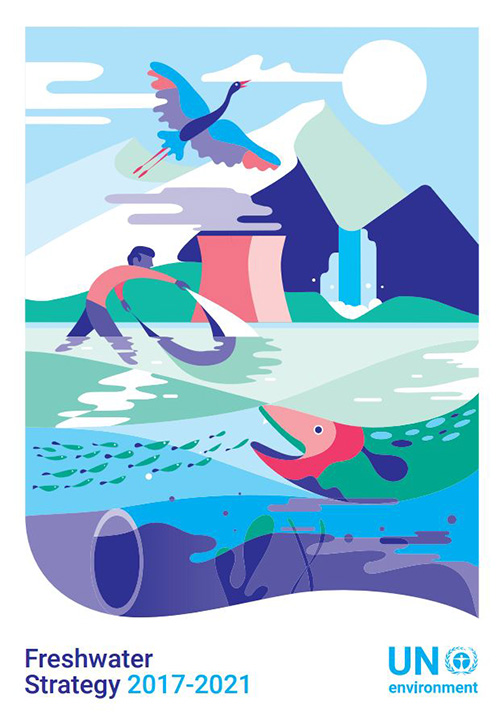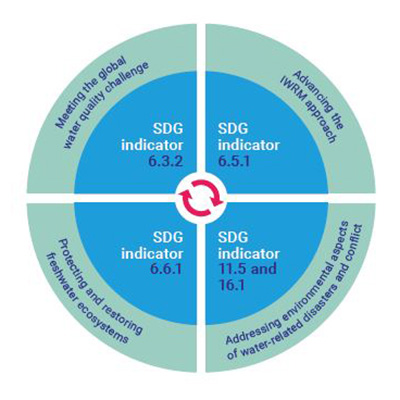When I was a young adult going to school in an urban area in the United States, I often heard about the scourge of the lack of proper education for the kids in our country: an often-quoted figure was the number of children who couldn’t pinpoint Europe on a map, or who thought that milk and eggs came from cartons at the grocery store.
Now that I’m a water professional I’ve been plagued by similar, grown-up versions of this worry: “What if today’s generation of kids thinks that water comes magically out of your tap when you turn a handle and that it just disappears down your toilet?” Hopefully anyone who’s passed a 5th grade science class knows that that’s not the case, but in the international water and sanitation sector we often fall into the trap of thinking in a similarly simplistic way – that providing water and sanitation to all is simply a matter of technology, and pipes, and some other hardware needed to clean our water enough and then once we’ve used it, spirit it away again to some place to begin the process all over again.
Yet this way of thinking fundamentally ignores the natural process of the water cycle, the sources and recipients of water for drinking and all our productive uses, and the fact that freshwater ecosystems and especially open water bodies are being directly used by humans worldwide every day: for bathing, swimming, washing, cleaning, and – for 159 million people worldwide, primarily in sub-Saharan Africa, for drinking.1
UN Environment, as the part of the UN system that is charged with being a global steward for nature, has long included the protection and restoration of freshwater ecosystems such as lakes, rivers, wetlands and aquifers, and the services they provide, as a key part of its work and mandate. It also deals with other, related parts to the water management puzzle: adequate access to freshwater and its productive uses, for example, requires sound legal frameworks and good governance. Moreover, water quality monitoring, pollution prevention and standard-setting are of particular importance for the health and functioning of freshwater ecosystems, making these primary actions that countries need to undertake, requiring capacity-building, guidelines and data management.

Launched for World Water Day in 2017, UN Environment’s new strategy for freshwater brings together the technical expertise across its organization to help countries focus on this critical stage of the SDGs
The new Freshwater Strategy (figure 1) pulls together UN Environment’s technical expertise and experience, also in its role as a custodian agency for data collection and analysis of global SDG indicators, to focus on four key priority areas: advancing Integrated Water Resources Management (IWRM) approaches, meeting the global water quality challenge, protecting and restoring freshwater ecosystems, and addressing environmental aspects of water-related disasters and conflict.
This strategy is being implemented through the collaborative efforts of UN Environment’s technical units, regional offices and collaborative centers, such as the Global Wastewater Initiative, which is managed by the GPA (the Global Programme of Action for the Protection of the Marine Environment from Land-based Activities), and the Global Environment Monitoring System, spearheading 30 years of work on water quality monitoring. Colleagues at the UNEP-DHI Partnership Centre on Water and Environment contribute their long-standing expertise on IWRM and data management, among many different areas, with the work being coordinated and technical expertise added by UN Environment’s Freshwater Ecosystems Unit at headquarters in Nairobi.

Figure 1. Priority areas of UN Environment’s Freshwater Strategy 2017-2021
Together, these centers and more bring together a wide range of aspects of environmental expertise from local to regional to global scale. In doing so, its aim is to promote human well-being, support inclusive growth, enhance environmental health and reduce risks while improving resilience (Figure 3).

Figure 2. How UN Environment’s Work on Freshwater supports and relates to the SDGs
UN Environment is actively seeking partners with which to carry out this work. Find out more and get in touch with us at www.unep.org/ecosystems/freshwater.
1 WHO/UNICEF Joint Monitoring Programme, Progress on drinking water, sanitation and hygiene: 2017 update and SDG baselines. At https://washdata.org/